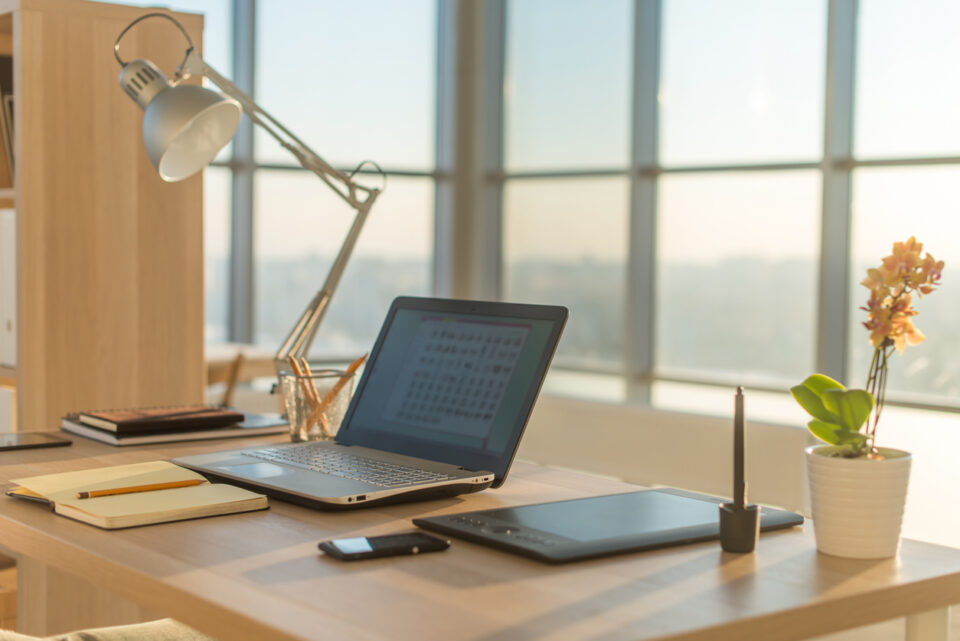How Minimalism in the Workplace Can Advance your Business and Professional Development

This article was originally published on April 7, 2021 and republished on February 15, 2023.
Minimalism has become a popular buzzword in recent years. Whether it’s Marie Kondo and her quintessential “does this bring you joy” approach, documentaries of the Minimalists, or The Home Edit on Netflix, people are clamoring for ways to tidy up and focus the spaces they inhabit. But minimalism extends beyond our homes and our physical spaces; it also includes our workspaces and our minds as well.
Minimalism in the workplace is helpful for several reasons. The physical act of clearing your workspace is a purposeful decision to only incorporate things with actual value. The same can be said for the things taking up space in your mind. Minimalism, or making these decisions and removing distractions, is an exercise in intentionality.
Being busy all the time is an impediment to creativity and is unsustainable. Several great minds of our time, from Einstein to Steve Jobs, would build in time each day to mute the demands of the outside world for a short period in order to rest the mind, relax, and see the big picture. TED speaker Steven Kotler notes that neuroscience shows blocks of disconnected quiet time have a profound effect on our thinking and creativity. When you fill up your day, even if it is a balance of professional and personal activities, it creates lots of deadlines. That pressure forces the brain to focus on the details. For instance, you might think: I need to finish this call by 4:45 so I can change clothes, get my mat, and make it to yoga class by 5. When we force the brain to focus on the details, it activates the left hemisphere and blocks out the bigger picture. It can also create additional stress from the pressure and urgency to hit those deadlines all day, which further zaps creativity.
So what is minimalism, and how can we apply it to our careers, workspaces, and businesses? Well, as with most things, the definition varies depending on who you ask. For Marie Kondo, it means eliminating anything that doesn’t bring you joy. For “the Minimalists,” it means few personal belongings and a relatively bare living space. For this writer in Forbes, it means, “as simple as possible but no simpler.” For some people, these definitions may be too impractical, vague or overwhelming to be helpful or meaningful. If this is the case, try a minimalist definition to minimalism: reduce the unessential or unfulfilling.
Here are a few ways to get started with minimalism at work:
- Set boundaries. Saying “no” can be hard, especially when it comes to our careers. We want to do a good job and establish ourselves as capable, diligent workers – to our clients, our employers, customers, and colleagues. There are so many useful things we can spend our time on but if you aren’t prioritizing your professional development, no one else will do it for you. It is helpful to remember that when you say “no” to one thing, you are saying “yes” to something else. And vice versa. With strategic and intentional boundaries, we can focus on our career priorities.
- Streamline your workload. Sharing responsibilities can empower people, motivate them to do a better job, and help them grow as professionals. Remember, don’t just look down the ladder. There may be people at your level or above who could benefit from tasks or areas of focus currently on your plate.
- Reduce clutter. Studies have shown that clutter can exacerbate to anxiety and stress. This applies to both your physical and digital space. By working within the parameters of your IT systems and business requirements, you can file away those items you need and discard those things you don’t. Melissa recently visited her office after many months of working from home, and noted, “I was struck by all the things in it that I previously thought I needed to have around me in order to work.” After a year of working productively without these items, it’s clear that they weren’t necessarily after all.
- Create time for transitions. With more of us working from home, it can be especially hard to separate work from home. Clear transitions between activities and responsibilities can help to draw clearer lines between our various roles so that we can make more intentional decisions about our time, energy, and space.
- Ask yourself “why?” more often. Whether it is an event, advertising opportunity, meeting, or process, ask yourself “why”. If there is no clear reason for what you are doing or why it is being done that way, it may be time to reassess and possibly even eliminate some of these items from your business or workday. Don’t be nervous to ask these questions out loud. The pandemic has forced us to reconsider a lot of things we took for granted, things that might have changed earlier if people spent more time asking why.
Sources:
How minimalism can make your business more successful – European CEO
5 Minimalist Principles That Promise To Simplify Work And Prevent Burnout (forbes.com)
How Being A Minimalist At Work Can Make You More Successful (lifehack.org)